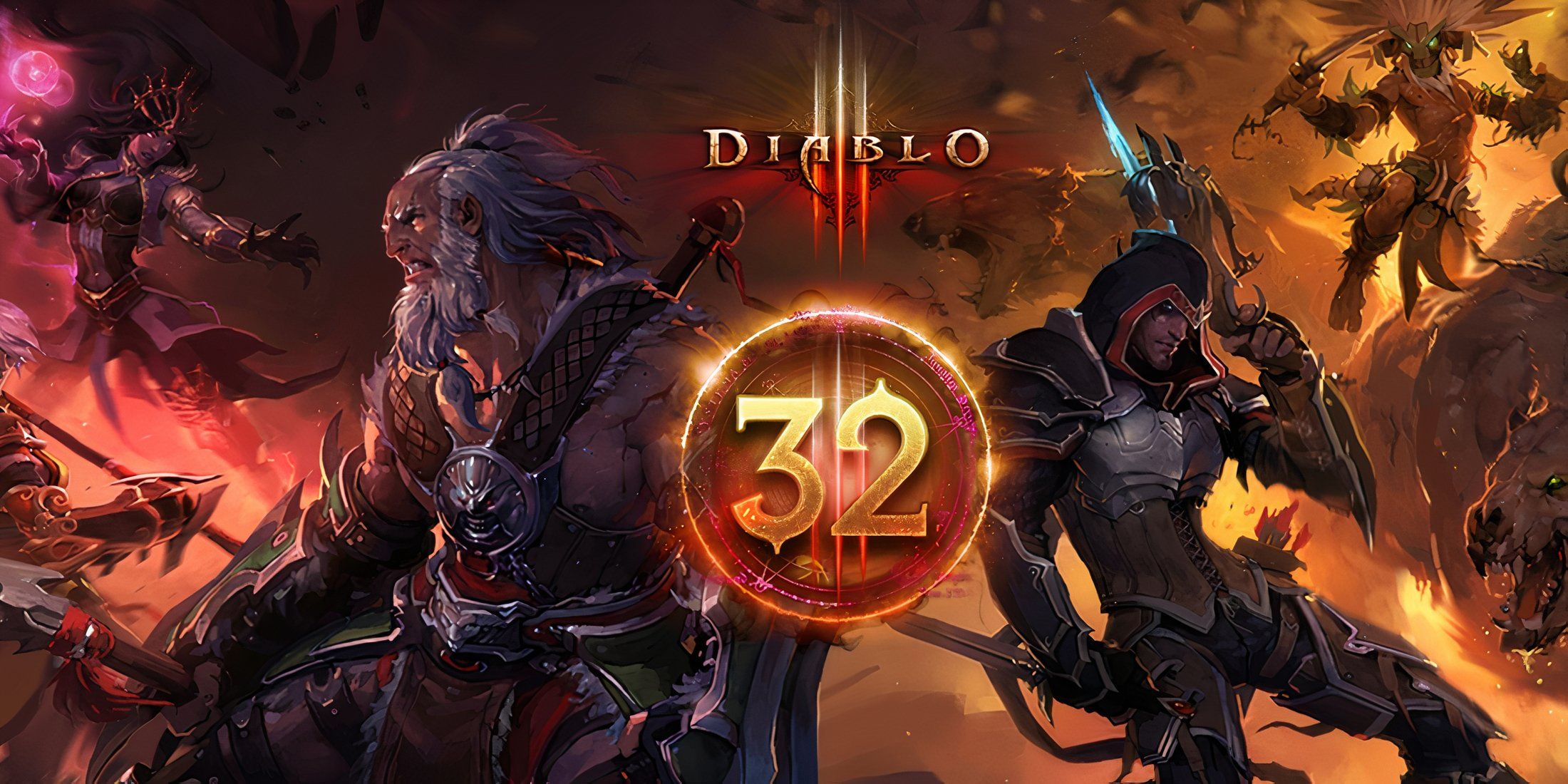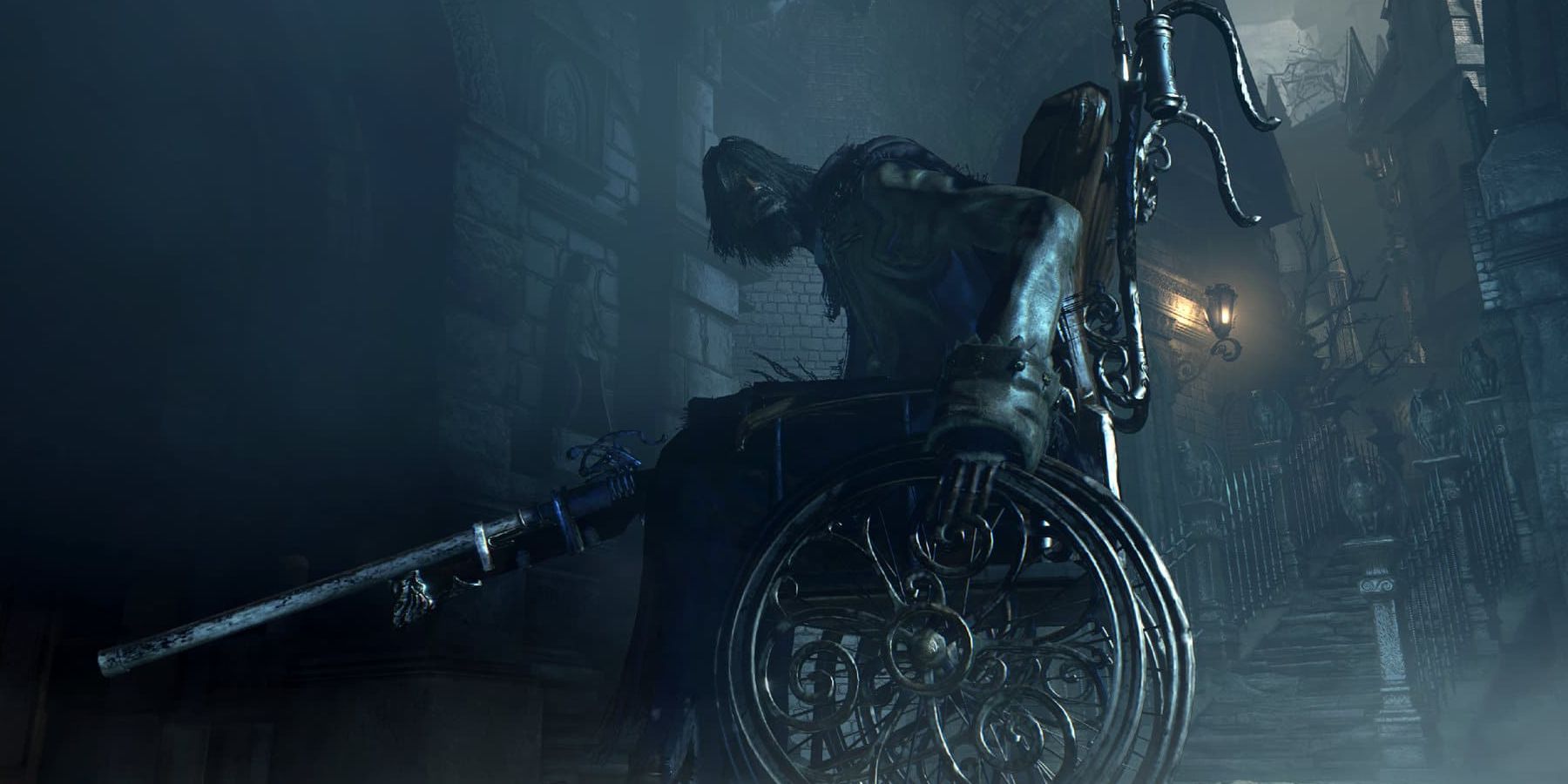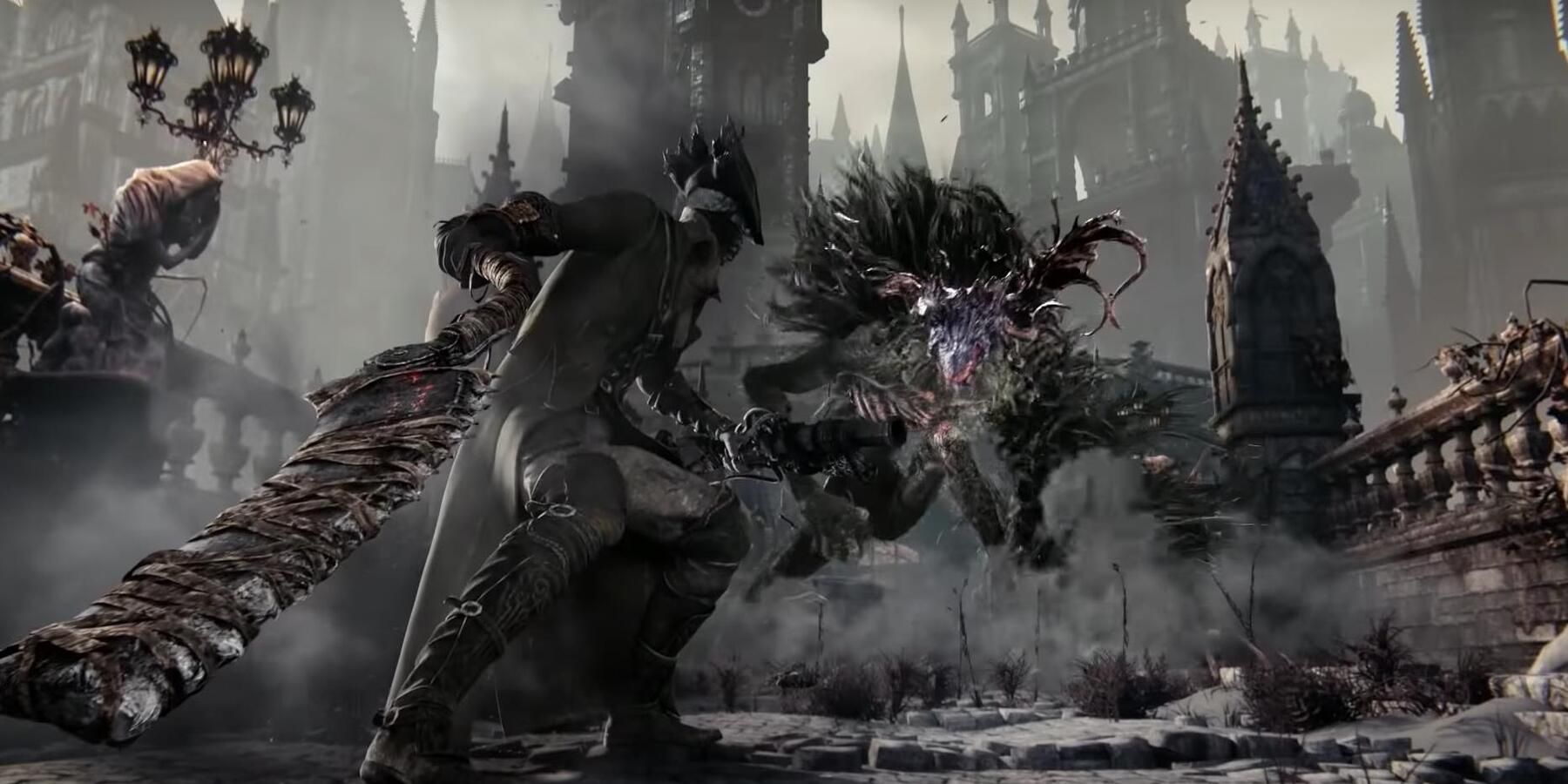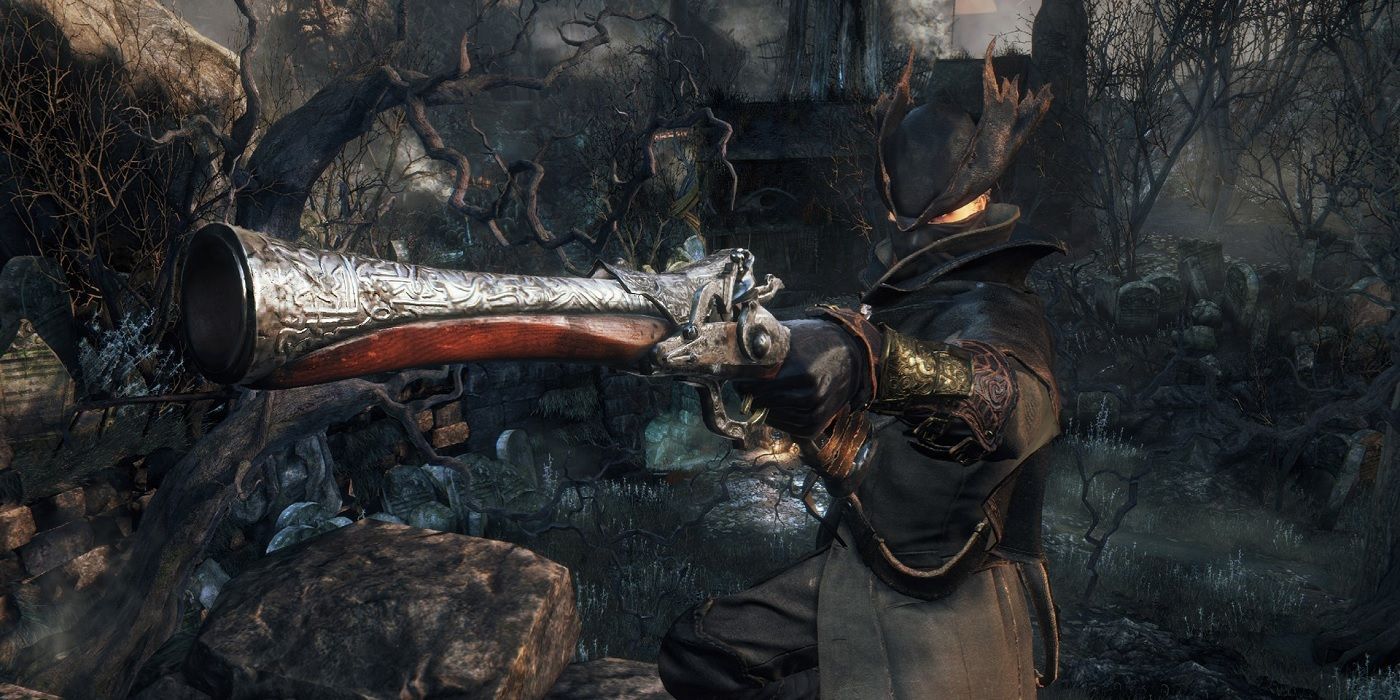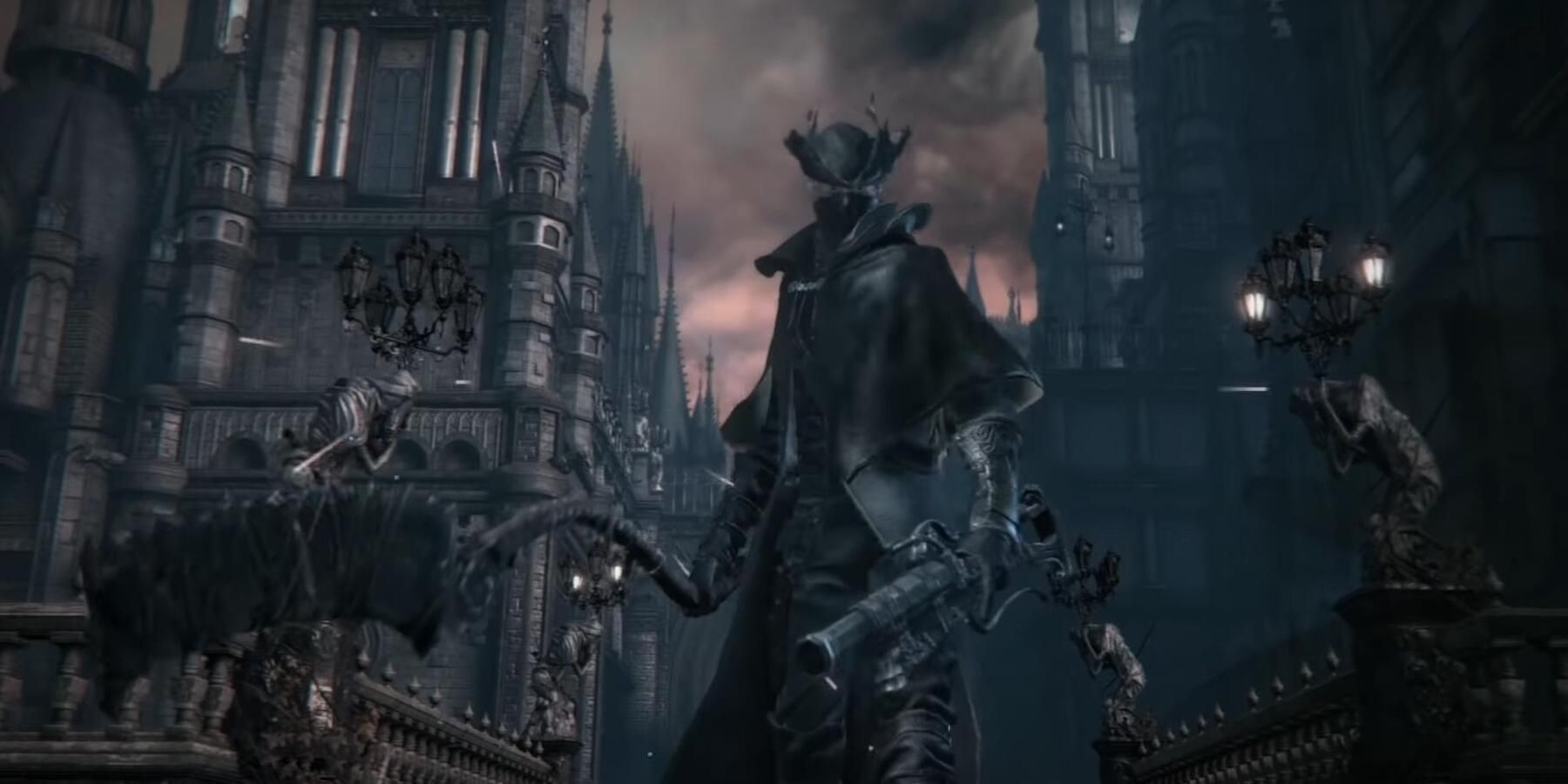Highlights
- Bloodborne's unique approach to healing with blood vials and limited resources creates both challenges and rewards for players, encouraging skill and exploration.
- The absence of shields in Bloodborne forces players to engage in fast-paced, relentless combat, making it more intense and requiring constant movement.
- Guns in Bloodborne serve a hybrid purpose, allowing players to interrupt enemy attacks and perform devastating Visceral Attacks, changing the dynamics of parrying in the game.
FromSoftware exploded in popularity, particularly with western audiences, in the late 2000s and early 2010s thanks to the release of Demons Souls and the Dark Souls games. When the studio released Bloodborne, a spiritual successor to the Souls games, in 2015, many of the design principles of these earlier releases were carried over. Many changes were made, however, and Bloodborne's differences from the rest of FromSoftware's popular releases are far more than skin-deep.
Bloodborne is influencing new releases today, so it's impact on the gaming landscape has been considerable, but it didn't exactly seem like a sure success in the lead-up to its release on the PS4. FromSoftware's flagship releases were medieval, high-fantasy action-RPGs featuring brutal combat, obscure lore, and build variety, and Bloodborne appeared to be something else entirely; with a gothic, 1800s aesthetic, the game looked more like Van Helsing than The Lord of the Rings. Players were given guns, shields were all but eliminated from the game, and the combat as a whole took on a much more fast-paced, visceral flavor. While some fans of the Souls games may have been apprehensive because of these changes, it was precisely these deviations that made the game so successful and special.
Bloodborne Got Rid of Estus Flasks
Whether Bloodborne is harder than the rest of FromSoftware's output is up for debate, but the difficulty of the game is certainly affected by the way that healing works. Unlike in Dark Souls, Sekiro, and Elden Ring, where healing charges come in the form of a flask that refills itself when the player rests or respawns, players heal in Bloodborne by collecting a resource known as blood vials. Blood vials do not regenerate upon death or resting at a checkpoint - they need to be found throughout the world and stored.
This is one of the most contentious aspects of the game. On the one hand, tying healing to a finite resource can lead to situations where the player has to farm Bloodborne's map to restock their inventory, particularly if they reach a difficult section. This can halt the action and make the game feel like a grind at times. On the other hand, this system rewards players for their skill, as they will have more vials at their disposal if they can pass through an area or boss encounter without taking much damage, leaving them better prepared for greater challenges. It also encourages exploration, since blood vials are valuable resources that can be found just about anywhere. Additionally, it leaves room for players to use the rally mechanic, which lets them regain some lost health if they quickly attack an enemy, further encouraging aggressive play.
The Removal of Shields Makes Bloodborne More Intense
The rally mechanic might encourage aggressive fighting, but taking away shields is what necessitates it. FromSoftware games are famously difficult, but even veteran players struggled with Bloodborne's fundamentally different approach to combat. While much of the moment-to-moment fighting is similar to the Souls games (a focus on positioning, invincibility frames, etc.), Bloodborne completely took away the option to use a shield, something that is an essential part of the toolkit for many Souls players.
This does remove a defensive option, but it also forces players to engage with the game's quick, relentless combat. Bloodborne can feel like Dark Souls on fast-forward, where enemies can move much faster, but so can the player, with a slick side-step maneuver being added in addition to the classic dodge roll. Even with Bloodborne's heavy weapons, the combat is considerably quicker, tighter, and more focused on constant movement than in the Dark Souls games, to a degree that wouldn't be approached until Sekiro: Shadows Die Twice.
The Arrival of Guns Changed How Parrying Works in Bloodborne
Keeping with the theme of aggressive, offense-focused combat, Bloodborne swapped shields for guns. These guns don't function as the guns in a shooting game do, and the player can't even use precise aim. Instead, the guns serve a sort of hybrid purpose, allowing players to interrupt enemy attacks with a well-timed blast. Hitting an even smaller timing window will stun an enemy, opening them up to a punishing Visceral Attack. This allows guns to be both offensive and defensive options, making their inclusion one of Bloodborne's key features.
Bloodborne De-Emphasized Armor and Weight Classes
In previous FromSoftware games, armor played a much bigger role. Aside from providing defensive buffs for various damage types, it would also affect character weight; if a character equipped heavier armor, depending on their endurance stat, they would roll slower, while lighter armor would exchange protection for mobility, opening the door to different play styles. Bloodborne armor still offers protection against different damage types, but there is no weight stat, and the player's mobility is never affected by the armor they choose to wear.
Like in the case of blood vials, this change to armor is something of a double-edged sword. Armor in Bloodborne is certainly stylish, but the fact that weight doesn't play a role means that selecting armor is a much less important process. By that same token, though, it can be argued that this serves the game well, as players can treat armor like cosmetics with more minor, situational advantages, and not have to worry about the core gameplay and movement being affected.
Bloodborne was a bit of a risk for FromSoftware. The studio could have very easily produced another Dark Souls game, or made Bloodborne Dark Souls with a different, darker coat of paint, but the developer instead chose to make something similar, yet distinct at every moment. With fans pleading for a Bloodborne PC port or remaster, it seems like the game's new approach to familiar FromSoftware features greatly helped it stand out in the minds of players. Hopefully, these fans will get to see Bloodborne return someday.
Bloodborne is currently available on PS4.

